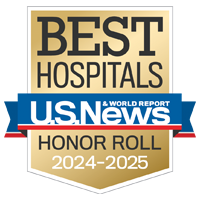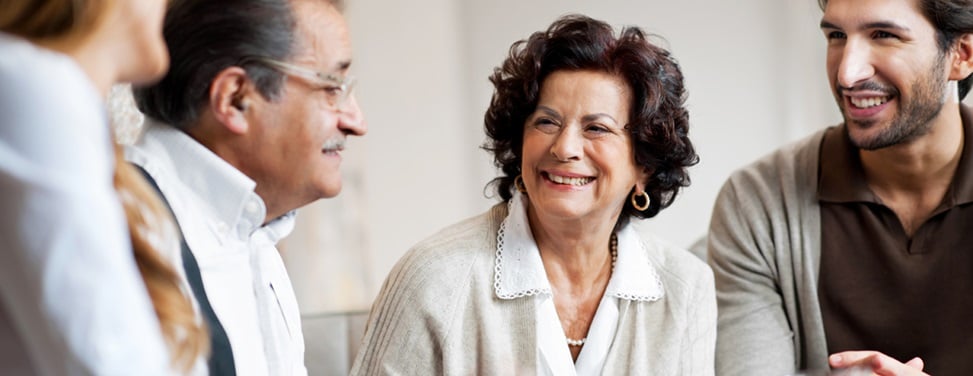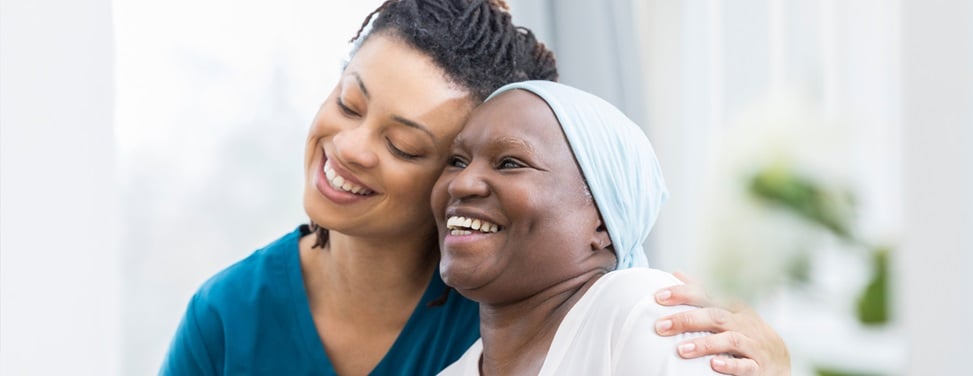Hip Labral Tear

Overview
A hip labral tear is an injury to the joint's soft tissues. The hip is a ball-and-socket joint, with the femoral head (ball) located within the acetabulum (socket). The acetabulum is lined with strong protective cartilage called the labrum. The labrum forms a gasket around the socket, a seal that helps stabilize the joint. When the labrum tears, the tissue can get pinched between the femoral head and the acetabulum, causing pain when the hip joint rotates or flexes.
Labral tears can result from structural problems in the hip, injuries or degenerative conditions, such as arthritis. The problem is especially common in athletes who perform repeated hip flexion (the motion of bringing the knee toward the chest), such as runners, hockey players, soccer players and football players.
Please visit the UCSF Hip Preservation Center at hipcenter.ucsf.edu for more information.
Our approach to hip labral tears
UCSF is committed to helping patients with hip labral tears return to the highest level of activity possible, whether they're avid weekend warriors or elite professional athletes. Our team includes orthopedic surgeons who specialize in the hip and other joints, primary care sports medicine doctors, physical therapists and athletic trainers. These health care providers work together to tailor a treatment plan to each patient's needs and goals.
Treatment for a hip labral tear usually begins with rest, anti-inflammatory medication and physical therapy. We offer the full range of physical therapies, including exercise regimens, functional activity training and neuromuscular reeducation (techniques that condition the area to move normally again). Patients who continue to experience pain may choose to have surgery. Our orthopedic surgeons are experts in hip arthroscopy, a minimally invasive procedure using small incisions and specialized instruments to repair the torn labrum.
Awards & recognition
-

Among the top hospitals in the nation
-

One of the nation's best for orthopedic care
Signs & symptoms
Patients with labral tears often have a long history of vague groin pain or pain in the front of the hip, accentuated by certain movements, such as hip flexion and rotation. Some patients feel pain after sitting for long periods or with sports and other physical activities. Patients may also have a history of catching and popping sensations in the hip.
Diagnosis
Doctors perform a physical exam, checking for pain with hip flexion and internal rotation. X-rays often show abnormal bone spurs in the hip joint, and an MRI can be useful to confirm the diagnosis.
Treatments
The initial treatment plan for a labral tear usually comprises a period of rest, use of anti-inflammatory medication and physical therapy. Exercises in the physical therapy program focus on improving the hip's range of motion and strengthening core muscles. Nonsteroidal anti-inflammatory drugs (NSAIDs), such as ibuprofen or naproxen, are helpful in decreasing the inflammation and pain associated with a labral tear. Sometimes corticosteroid injections are used to alleviate inflammation and discomfort.
In many patients, the symptoms disappear with time. But those whose pain continues despite conservative treatments may benefit from arthroscopic surgery to repair the damaged labrum (an arthroscope is an endoscope for joints). Patients are usually on crutches for two weeks after surgery and make a gradual return to sports over the following months. Physical therapy is a key part of the recovery and begins one week after surgery.
Frequently asked questions
- When can I shower after surgery?
You'll need to keep the incisions clean and dry until your first post-op visit, about one week after surgery. At that time, you'll likely be cleared to shower, but don't submerge the surgical site in a bathtub or swimming pool until three to four weeks have passed since your surgery.
- When will I have a follow-up appointment?
Plan to visit your doctor about a week after surgery for a physical exam and X-rays.
- When should I start physical therapy?
You should start approximately one week after surgery. Many patients begin right after the first post-op appointment.
- How long will I be on crutches?
Most patients use crutches for two weeks after hip arthroscopy.
- When can I drive?
Patients may drive once they no longer need crutches, which is typically two weeks after surgery.
- When can I return to school or work?
Most patients will be ready to return to school or desk work five to seven days after surgery. If you're able to work from home, your initial recovery will be easier. If you have a physically demanding job that requires prolonged standing, walking or lifting, you may need more than a month for a safe recovery and medical clearance before returning to work.
- When can I return to my usual recreational activities?
Most people are returning to sports and other physical activities about six months after hip arthroscopy.
UCSF Health medical specialists have reviewed this information. It is for educational purposes only and is not intended to replace the advice of your doctor or other health care provider. We encourage you to discuss any questions or concerns you may have with your provider.









